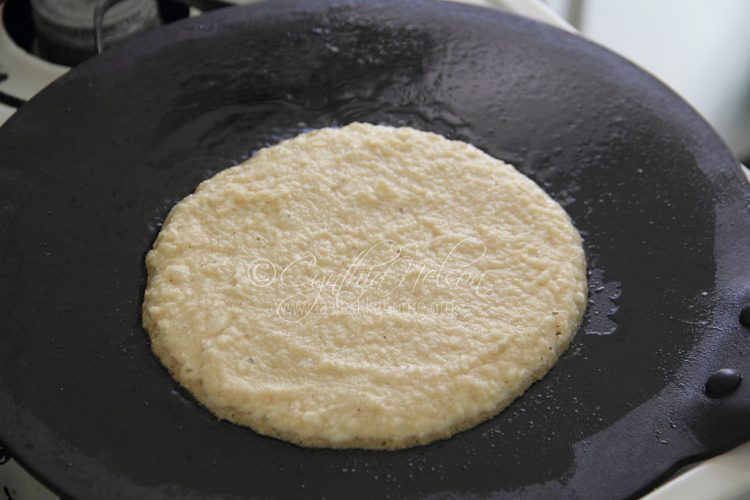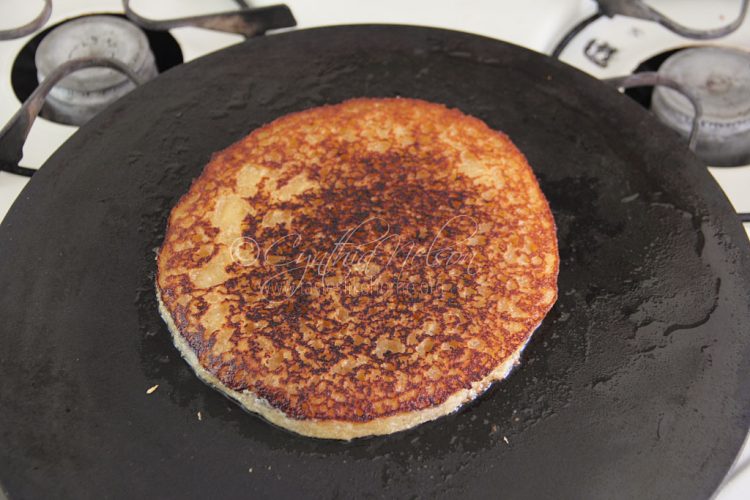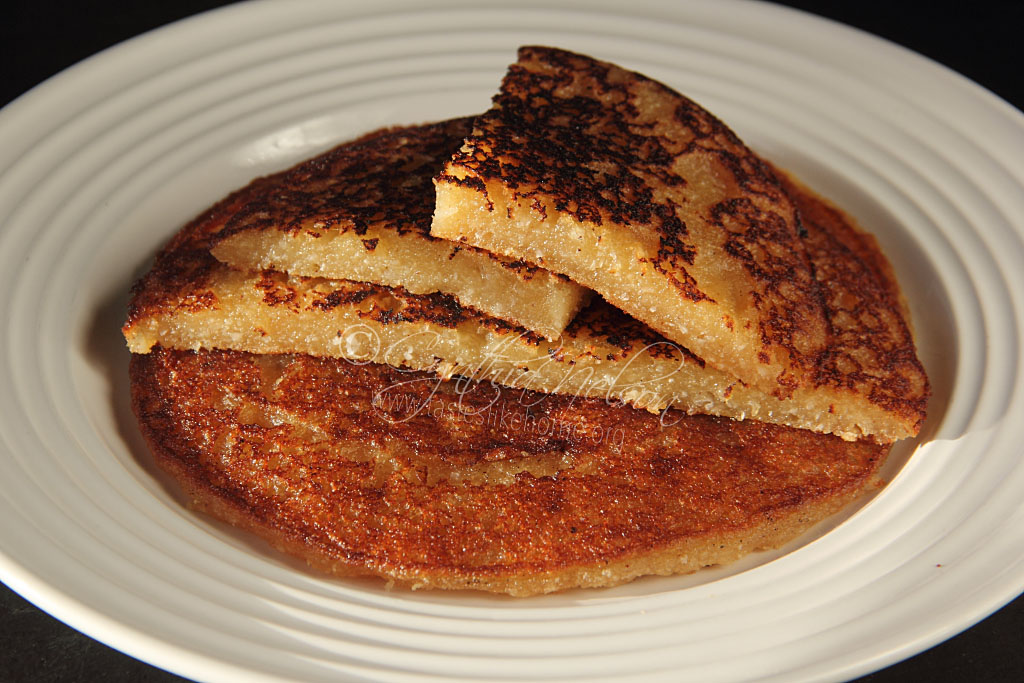 It’s not right. And it’s not nice. Y’all know about certain things and keep the information to yourselves. Me? I share with you. Why none of you sought to tell me that there is such a thing as tawah pone (cassava pone cooked on a tawah)?
It’s not right. And it’s not nice. Y’all know about certain things and keep the information to yourselves. Me? I share with you. Why none of you sought to tell me that there is such a thing as tawah pone (cassava pone cooked on a tawah)?
I watched with interest, and then excitement, when I saw a few YouTubers in and outside of Guyana make flat pancake-like cassava pone that was gooey and soft when pulled apart. They ate it warm, making sounds of ummm, while proclaiming how nice the pone tasted. They ate and they shared with their family. The beaming faces said it all. After watching the videos I was hungry for pone and eager to try making it myself on a tawah.
My late Mother made the best pone I have ever eaten. Aunty Barbara’s pone was known among her friends and friends of her children. The recipe in my book (Tastes Like Home, My Caribbean Cookbook) is my mom’s. She grated the cassava and coconut for the pone the day I baked it. There was naked impatience in the house that day as everyone waited for me to plate and photograph the pone before they could devour it.


On another occasion, after a visit up north with my Food-in friends and learning that you could blend the cassava instead of grating it, I made a pan of pone and Mommy and I looked at each other as we bit into slices basking in the revelation that we could eliminate the chore of having to grate the cassava. How I wished she was here because she would have loved this version that cooks way faster and offers a large surface area of chewy crust and tastes as good as the baked version.
Last weekend, I bought some cassava and a fresh dried coconut to make tawah pone. I was keen to experience making it myself this way for the first time. The thing I was most looking forward to was cutting and pulling it apart for that much sought-after soft gooey-likeness. However, the thing I was concerned about was the actual flipping, turning over of the tawah pone. I saw from the videos (and some of it was edited out), how some people struggled to lift it because the pone stuck onto the tawah even though the pan was oiled before the batter was added. Some people’s broke apart but that did not detract from the taste.
Another issue was that some people spread the mixture out too thin causing some of the eaters to comment that they preferred it a little thick. The thinness also contributed to the pone breaking apart when attempting to flip it.
I contemplated my options in terms of pans and tawahs – cast iron or non-stick skillet; cast iron, non stick or hard anodized tawah. I decided to go with my Futura non-stick tawah.
The tawah was heated on medium heat and brushed with oil. The batter sizzled as it was dropped onto the pan. Remembering the challenges the YouTubers had, as well as a rule of thumb when cooking pan-seared fish in that it will let you know when it is ready to be turned if there is no resistance when a spatula is slipped underneath it, I gently went around the edges of the pone, slowly lifting it bit by bit. I met resistance as I slid the spatula towards the centre, that meant it was not yet fully cooked on that side so I let it cook for a few more minutes before going back in. It released itself from the pan after gentle probing and I flipped it over to continue cooking. In total, each pone took 12 minutes to cook. 6 minutes on each side. 3 minutes on medium heat and 3 minutes on low heat.
Lining wire racks with parchment paper I rested each pone to cool without stacking them.
I wanted so badly to tear into the first pone when it was warm but cool enough to handle, but I resisted and waited until I had finished cooking the others. I literally just stopped writing after that sentence, closed my eyes in memory and smiled. The tawah pone was everything I imaged it to be and more. The crust was filled with caramelized notes of sweetness, the inside was soft and melting in the mouth, the aroma of the cinnamon was warm and inviting. I exercised some serious discipline and only ate half of one of the pones. I’m gonna eat the other half after writing this column. I made the pone on Saturday and I am writing the column on Thursday. See how good I am being? (LOL) Recognising the danger and also the need for feedback, I rang up my taste testers to collect theirs.
Hear this. I messaged one of my neighbours (she is Guyanese) to ask if she eats cassava pone. She enthusiastically responded yes complete with multiple exclamation marks and smiling emojis. I took one across to her and explained that I made it on the tawah… she nodded knowingly and said, “Yeah, I make it all the time!” Imagine my shock. I said, “Sandy, you have been holding out on me, why have you never offered me any?” She sheepishly said, “Because it never makes it out of the kitchen.” I nodded in understanding. I totally get it. Tawah pone is extremely hard to resist. Good tasting pone is irresistible regardless of whether it is made in a pan in the oven or on the stovetop.
If you have never had tawah pone, make it, and make it soon.
All you need is grated cassava and coconut. You can make it without coconut if that is your preference. Whatever amount of grated cassava you have, add half that amount of coconut. For example, for 4 cups of grated cassava, use 2 cups of grated coconut. Mix them together along with some melted butter and sugar to taste, as well as spices such as cinnamon and nutmeg. Add a splash of vanilla or mixed essence for more flavour. Putting ground black pepper in pone is a matter of personal preference. If using, I would recommend freshly ground black pepper. It adds a warm heat/kick so to speak.
Mix well and cook over a combination of medium and low heat in/on an oiled pan. In terms of quantity, make each pone using I heaped cup of batter and spread it evenly to 6 inches wide. That gives a satisfying level of thickness. As stated in a few paragraphs above, cook on each side for 6 minutes – 3 minutes medium heat and 3 minutes low heat before flipping and repeating the cook time.
With pone this accessible, it could be tempting to want to make it often.
Enjoy!
Cynthia
cynthia@tasteslikehome.org










